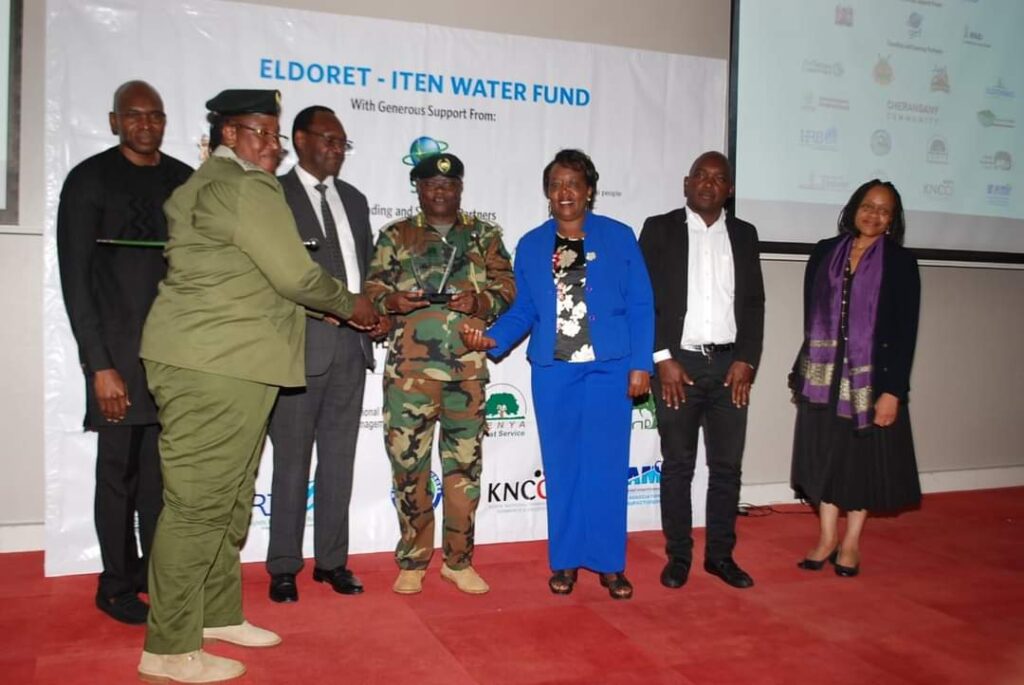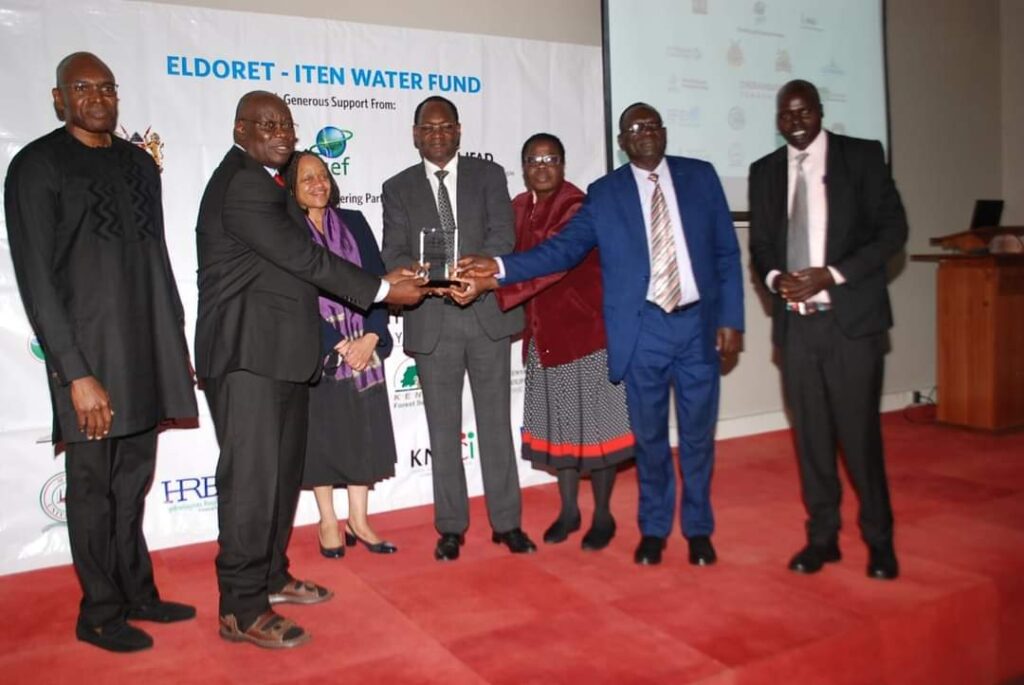Government Launches Fund to Conserve Source Waters For Eldoret, Iten

By John Kariuki
The Kenyan government has set up a fund to finance the conservation of the Cherangany, Elgeyo Hills forests, and the Northern Mau.
The critical water towers supply water to the cities of Eldoret, Iten and surrounding communities.
The Global Environmental Facility (GEF) has committed Sh260 million, channelled through Ministry of Environment & Forestry, for the establishment the Eldoret-Iten Water Fund (EIWF) to be managed by International Fund for Agricultural Development (IFAD) and implemented by The Nature Conservancy (TNC) for three years.
Dr Chris Kiptoo, the Principal Secretary for Environment & Forestry, today said the launch of the project comes at a time when Kenya is experiencing serious and prolonged drought in many parts of the country and warned that the situation could get worse if efforts were not galvanized to accelerate conservation of threatened forests and major water towers.

“The ravages of drought and hunger across many parts of the country can only get worse as conflicts over pasture and water, human-wildlife conflicts, disruption of learning in schools and forest fires increase,” he said, noting that the three water towers in the North Rift have been experiencing heightened deforestation, expansion of unplanned farming activity and continued degradation of catchments and wetlands.
“These destructive approaches are putting a strain on the sustainable supply of high quality and quantity of water for industry and communities thereby threatening peaceful coexistence, agricultural potential, sports tourism, biodiversity, and livelihoods.” Dr. Kiptoo added.
The Eldoret-Iten Water Fund is a collective action mechanism which brings together business, government, local communities, and public sector financiers to harness resources to finance long term investments in nature-based solutions.
It is also a payment for ecosystem model requiring water users in cities to pay for conservation of the upstream forests, wetlands and farmlands that regulate and filter the water reaching their taps.
The mechanism has been successfully used in the Upper Tana Catchment – which supplies 95 per cent of water consumed in Nairobi City. Ms Sara Mbago-Bhunu, IFAD Regional Director for Southern & East Africa explained that “the water fund model is proven as a governance mechanism that assures increased investment flows for sustainable land management and stakeholder coordination to realize integrated natural resource management sustainably.
“We are therefore very excited to be deploying the model in the second source water conservation effort in Kenya” She said.
The Cherangany, Elgeyo Hills forests, and the Northern Mau towers are important biodiversity hotspots. They nest several indigenous tree species and regionally threatened bird and mammal species, while farmers and residents are enduring devasting health effects from chemically and biologically contaminated runoff arising from poorly planned agricultural expansion and increasing levels of nitrates in the water.
Mr.Michael Doane, TNC Global Managing Director for Food & Water highlighted that food production systems are responsible for nearly 80 per cent of deforestation; 70 per cent of terrestrial biodiversity loss; 50% of freshwater biodiversity loss, and 25% of all greenhouse gas emissions globally “In Africa 65 per cent of the land is already considered degraded, which is a huge concern considering that 70 per cent of Africans depend on agriculture. Therefore, large scale, low-cost interventions to provide water security to billions of people is critical.
“We need to galvanize all parties to tackle climate change, protect lands and waters, and provide populations with food and water sustainably”, he said noting that rising demand for more land to feed the growing population is causing nature around the world disappear at a rate that far outpaces its protection.
The land conservation work will cover an area measuring roughly 6,774 km2 with a population of about 1.6 million inhabitants straddling the two counties of Uasin Gishu and Elgeyo Marakwet.
It will start in Tambach, Kesses, Two Rivers, Kipkaren and Moiben Rivers – which flow into the Chebara Reservoir, the main source of water supply to Eldoret town and is expected to support 100,000 rural families, who will benefit from improved food security and water for domestic use. TNC will work with local landowners to embrace wetland regulations, invest in catchment conservation, agroforestry and among other climate smart agricultural practices, initially on 5,000 farms within the Chebara dam watershed.
While acknowledging that protecting nature contributes to multiple SDGs and provides the links between water, agriculture, energy, and rural development, speakers at the launch said Kenya faces the twin challenge of balancing between protection of the environment and economic development to lift millions out of poverty.
“We are acutely aware of the need to enhance environmental conservation and management as well as livelihoods. This fund will promote sustainable management and resilience of ecosystems and their different services for land, water, biodiversity, and forests and at the same time safeguard the long-term potential of critical food systems”, said Ms Mbago-Bhunu during the event,
Several institutions were recognised for their efforts in the establishment of the Eldoret-Iten Water Fund, among them: Eldoret water and sanitation company, Kenya Water Towers Agency, Water Resources Authority, Kenya Forest Service, NEMA, Hydrologists Registration Board, University of Eldoret, Moi University, The Cherangany Community, Kenya Wildlife Service, and the county governments of Uasin Gishu and Elgeyo Marakwet.
The function was also graced by the Elgeyo Marakwet Governor elect H.E.Wesley Rotich








